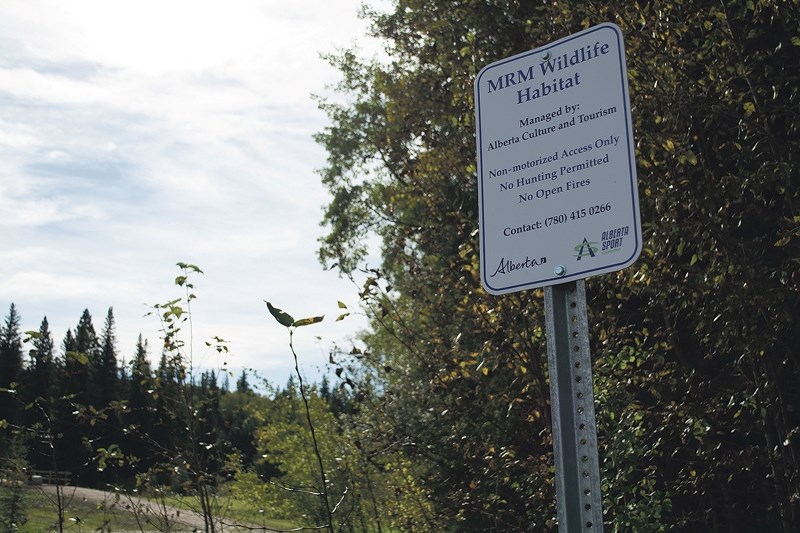Until four years ago, a piece of land tied the children of three business partners together.
Barry Ketcheson, Janis Richards, David Richards, Trish Richards, Denise Smith and Duane McCallum donated a piece of land they inherited together to the Alberta Sport, Recreation, Parks and Wildlife Foundation in 2013.
On Sept. 16, they will see the fruit of their donation, at the official opening of the MRM bridge.
“They were young people. The new entrepreneurs,” said Janis Richards, describing her father Stan Richards and his business partners, Joe Mikkelsen and Kitch McCallum.
Richards said the three men came to Athabasca after serving in the Second World War, ready to start businesses.
In the early 1950s, they purchased the land by the Tawatinaw River and what is now the SS Athabasca Car Wash, with grand plans to develop in into a commercial centre. Those plans were squashed by the 1954 flood, when they realized that part of the land was partially on a flood plain.
Unable to use the land as planned, the three business partners used it as a lumber storage location.
After they passed away, the land fell to their wives, and then their children.
“When our mothers had it, they were just kind of hanging onto it,” Richards said.
“The land didn’t really get developed until the next generation got it,” Richards said.
She said the descendants discussed developing a mall on the land, and were even approached by a developer who wanted to build a golf course.
But after part of the land was expropriated to build the highway bypass, the group started approaching agencies to see who they could donate the land to, as a wildlife preserve. They named it the MRM wildlife preserve in honour of their fathers.
“It’s so much better for the wildlife to keep the quads out of there,” Richardson explained.
They donated the land to the Alberta Sport, Recreation, Parks and Wildlife Foundation, who used it to build the bridge connecting the Town of Athabasca to the Landing Trail.
Executive director for the Alberta TrailNet Society, Linda Strong-Watson, said the organization dependspartly on land donations to build the Trans Canada Trail. In Athabasca, it was only possible to connect after Richards’ group donated the land.
“There’s been a need for a bridge at this location for many years,” she said. “They donated a wildlife parklands within Athabasca to the province. That made the land available to make the trail and bridge part.”
Richards said the land kept the children in correspondence through the years, even though some moved away from Athabasca.
“We’ve all had to talk at different times and make decisions together,” she said, noting that she recently got back in touch with Ketcheson.
“The nice part is he said this is really nice to be in contact. I said, ‘I’m going to send you pictures.’ It’s a part of his history too,” she said.



